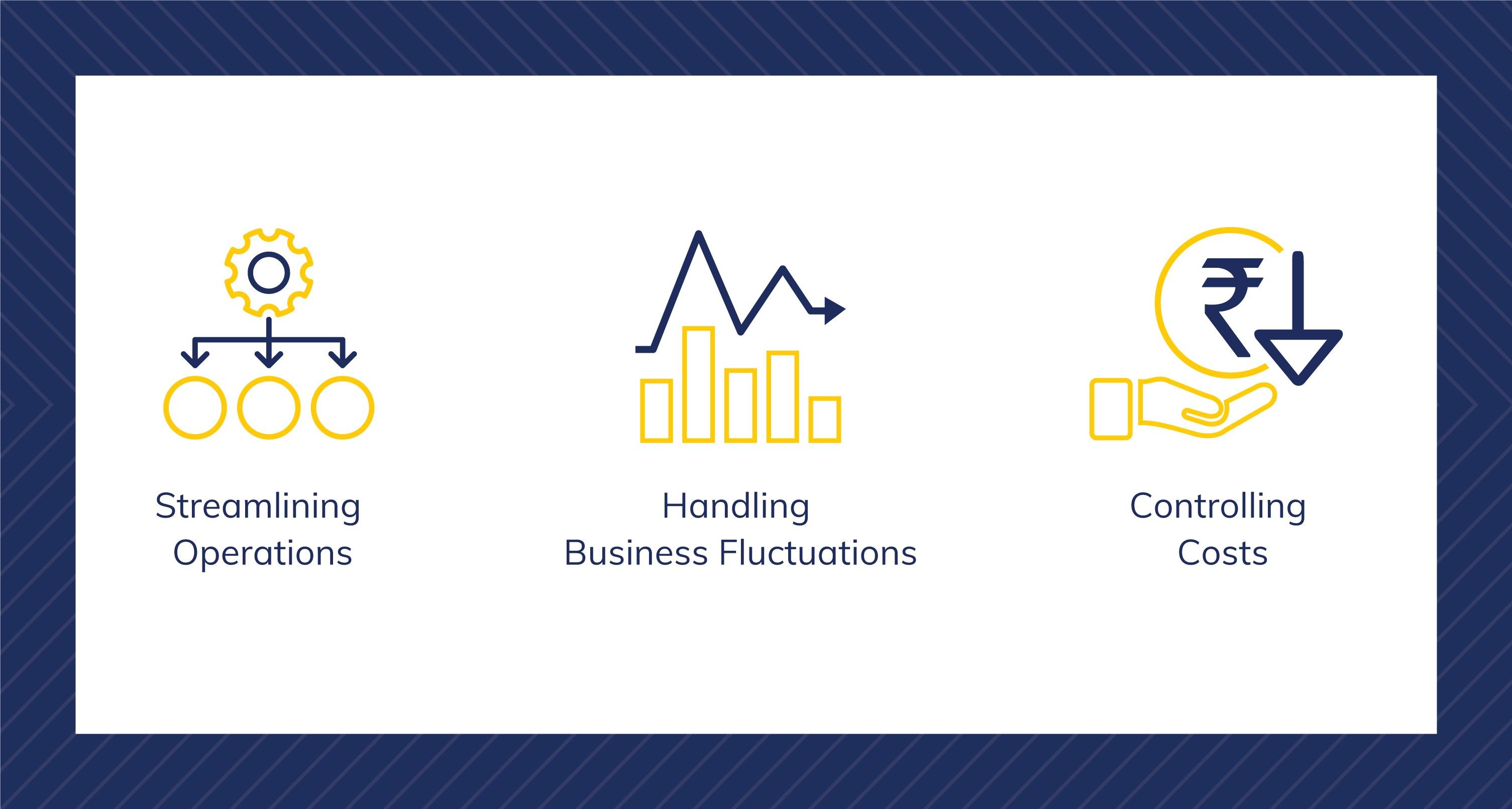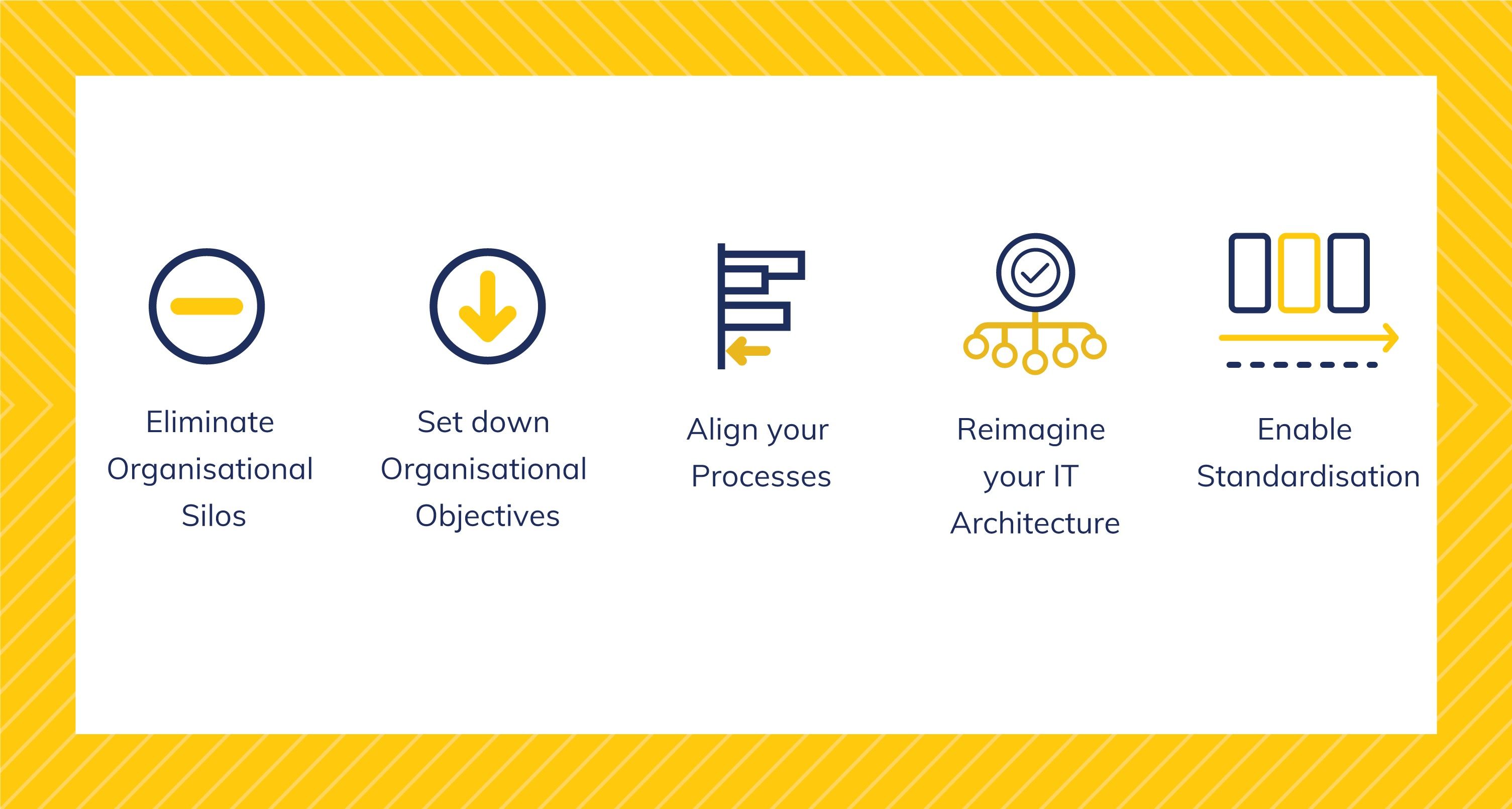SUPPLY CHAIN MANAGEMENT
Integrated Supply Chain Planning: Connectivity enables responsiveness
9 Jan 2021, 5 MINUTE READ
With new challenges springing up at every turn, companies are constantly looking to scale up the efficiency of their supply chains yet responsiveness or the ability to respond swiftly & positively to change remains a challenge.
Consider the current case of the COVID-19 pandemic. Research indicates that 94% of Fortune 1000 companies are experiencing supply chain disruptions as a result of complex, poorly integrated supply chains with disparate systems. These key perpetrators of low responsiveness will effectuate a potential loss of trillions of dollars in global revenue and affect countless people whose livelihoods hang in the balance.
The pandemic has accelerated the pace at which chief supply chain officers are realising the dire need to embrace an integrated approach to supply chain management. Without it, any solution for a current or future problem might exist but it shall continue to remain elusive.

Benefits of an integrated supply chain
A well-connected, close-knit supply chain managed by an able 3PL provider is highly responsive and offers a slew of advantages:

Streamlining operations
An integrated supply chain streamlines all your logistics operations - from warehousing & transportation to product customisation, packaging and omnichannel fulfilment - and presents a single, unified view of the entire system while eliminating any knots or potential sources of hiccups. It gradually strengthens the efficiency and cost-effectiveness of your efforts and can also be leveraged to expand into new markets, make way for multiple sales channels and offer more value-added services (VAS).
Handling business fluctuations
An integrated supply chain enables greater transparency, visibility and predictability in the system to significantly improve the level of customer-centricity in your organisation. It makes you agile enough to meet business fluctuations like a sudden shift in consumption patterns, seasonal demands and other varying needs of the market with great ease. With extensible space, flexible staffing, state-of-the-art equipment and multiple transportation options, an integrated system enables you to scale up or down as per need.
Controlling costs
With the rise of e-commerce, customers are demanding swifter, accurate and on-demand deliveries which can be commercially viable only when the associated logistics are tightly managed. An integrated supply chain can help you not only control costs but also reduce the capital expenditure on warehousing, transportation, manpower & training, equipment as well as technology. You can also optimise your production levels and shun inventory carrying costs by following a build-to-order approach as opposed to a build-to-stock approach.
How you can build a robust & resilient integrated supply chain
If you wish to embrace an integrated approach to supply chain management, consider the following key points:

Eliminate organisational silos: An integrated approach to SCM is effective only when an organisation can successfully break down the barriers that may exist between its multiple departments and bring them together for better engagement & collaboration.
Set down organisational objectives: Once you’ve eliminated the departmental silos, the next logical step is to define the objectives of your organisation as one complete entity instead of dividing your attention between the separate business unit and functional unit design & metrics. At this stage, you can also establish organisational metrics that can be tracked & analysed continually in order to understand the opportunities & threats to the entire supply chain and use the learnings to further refine the objectives.
Align your processes: For an efficient business process design, take the cross-functional route. Start at a high level and create an end-to-end mapping of the entire business process. Keep in mind that you can increase response time and work through high volumes of cancellations by automating repetitive tasks through robotic process automation. Cut down on multiple service providers, who can be replaced by vendors well-versed with integrating supply chains.
Reimagine your IT architecture: Follow the same cross-functional approach to IT systems redesign. Look at eliminating disparate applications to make way for a common set of applications across the organisation. Utilize analytics tools, which can identify risks and demand fluctuations, to enable effective, accurate and swift response.
Enable standardisation: Get everyone working out of the same playbook to reduce dependency on manual processes, improve systems & processes and ultimately reduce costs. Standardise process, infrastructure and technology and make provisions for adequate training & skill development to enable cohesive standardisation.
The outlook
Disruptions will continue to affect supply chains, today as well as in the future. A complex & fragmented one might not be able to handle the hit and break down altogether, as has been true for many organisations during the COVID-19 pandemic. An integrated approach that utilises the best industry practices & advanced technologies is the best way forward. It will help you build tightly-knit and highly-responsive supply chains that can endure multiple stresses and continue to stay efficient & deliver value in the long term.
Contact us today for detailed insights on how Varuna Group can support your business.
Frequently Asked Questions
Q1: What is integrated supply chain planning?+
It’s the process of connecting all stages of the supply chain—procurement, production, inventory, and distribution—into a unified plan for better efficiency.
Q2: How does connectivity improve supply chain responsiveness?+
Real-time data sharing across stakeholders enables quicker decision-making, faster problem resolution, and improved adaptability to market changes.
Q3: What technologies support integrated supply chain planning?+
Technologies include cloud-based platforms, IoT sensors, AI-driven analytics, and advanced ERP systems.
Q4: Why is responsiveness important in supply chains?+
It helps businesses quickly adapt to demand fluctuations, supply disruptions, and evolving customer expectations, reducing risks and costs.
Related Insights
SUPPLY CHAIN MANAGEMENT
The Crucial Role of Humanitarian Logistics
30 Sep 2021, 4 MINUTE READ
SUPPLY CHAIN MANAGEMENT
6 Inventory Management Strategies To Maximise Gains
3 Jul 2025, 6 MINUTE READ
SUPPLY CHAIN MANAGEMENT
Enhancing Supply Chain Resilience with Prescriptive Analytics
20 May 2025, 4 MINUTE READ
SUPPLY CHAIN MANAGEMENT
Emerging Supply Chain Trends That Will Redefine 2025
28 Jan 2025, 4 MINUTE READ
SUPPLY CHAIN MANAGEMENT
Building a career in Logistics and Supply Chain Management
13 Oct 2021, 6 MINUTE READ
Drive efficiencies throughout your supply chain with our technology-enabled services
View Services